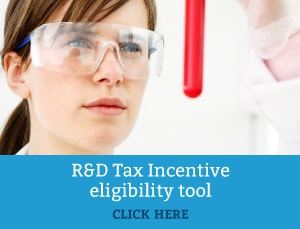App Developers, Have You Considered the R&D Tax Incentive?
March 11th, 2016 By 2020, 70 percent of the population will have smartphones. Accordingly, the dominant presence of smartphones is greatly expanding the scope of mobile phone software development. The “App Economy”, as it is branded, is indeed mounting as it intertwines with the phenomenal increase in mobile phone penetration.
By 2020, 70 percent of the population will have smartphones. Accordingly, the dominant presence of smartphones is greatly expanding the scope of mobile phone software development. The “App Economy”, as it is branded, is indeed mounting as it intertwines with the phenomenal increase in mobile phone penetration.
As a result, mobile application development has emerged as a leading category in the software industry. Typically, the development of this unique software for both iOS and Android platforms often requires extensive research and development (R&D) efforts – positioning app developers as the prime candidates for the R&D Tax Incentive.
In fact, the number of companies allegedly making R&D Tax Incentive claims in Information and Communication Technology (ICT) is second only to those in the ‘Engineering’ field of research. However, as the SME and tech start-up community continues to grow in Australia, one would anticipate that this number will only escalate with time.
Nonetheless, self-censorship can still hinder companies from claiming the R&D Tax Incentive. A common area of difficulty with app development is that it is an industry of swift transformation. What is deemed as an innovative method one day, may well be considered routine the next. As a result, companies can become prescriptive about what qualifies and what doesn’t on the basis of false assumptions. For instance, a common misconception is that app development isn’t considered R&D because the market is flooded with innovative smartphone apps already.
However, firms should not rely on this popular perception too readily. Rather, each development should be evaluated against the legislative definition and deliberated on its own qualities – evading any assumptions that particular software development activities cannot be “R&D” because they are now “outdated”. Ultimately, companies must pay sufficient regard to whether there were any precedents for the development and the extent to which any new knowledge was generated.
All things considered, the iterative software development methodology, inherent with app development, positions developers as prime candidates for the R&D Tax Incentive. In particular cases, it entails a 43.5% refundable tax offset to firms generating less than $20 million in annual revenue and a non-refundable 38.5% tax offset to other companies. Thus, for an app development company, the tax benefit is a welcomed non-dilutive source of funding for R&D activities. As noted above, there can be confusion in determining what is and isn’t defined as R&D within the fast-moving software industry. Therefore, it is recommended that companies enlist the guidance of a specialist to assist with their claim.
Please contact one of Swanson Reed’s Specialist R&D Tax Advisors if you are interested in learning more about the R&D incentive and what this can mean for your business.
Categories
- ATO Guidance and Materials
- AusIndustry Guidance and Materials
- Case Law
- Federal Budget 2021
- Federal Budget 2022
- For Accountants
- General Information
- Government Policy and Treasury
- Industry Specific Issues
- Interpretative Decisions
- Legislation and Parliamentary Matters
- R&D Tax Credit
- R&D Tax Funding Strategies
- R&D Tax Loans
- Recent News
- Tax Determinations
Archives
- May 2024
- April 2024
- March 2024
- February 2024
- January 2024
- December 2023
- November 2023
- October 2023
- September 2023
- August 2023
- July 2023
- June 2023
- May 2023
- April 2023
- March 2023
- February 2023
- January 2023
- December 2022
- November 2022
- October 2022
- September 2022
- August 2022
- July 2022
- June 2022
- May 2022
- April 2022
- March 2022
- February 2022
- January 2022
- December 2021
- November 2021
- October 2021
- September 2021
- August 2021
- July 2021
- June 2021
- May 2021
- April 2021
- March 2021
- February 2021
- January 2021
- December 2020
- November 2020
- October 2020
- September 2020
- August 2020
- July 2020
- June 2020
- May 2020
- April 2020
- March 2020
- February 2020
- January 2020
- December 2019
- November 2019
- October 2019
- September 2019
- August 2019
- July 2019
- June 2019
- May 2019
- April 2019
- March 2019
- February 2019
- January 2019
- December 2018
- November 2018
- September 2018
- July 2018
- June 2018
- May 2018
- April 2018
- March 2018
- February 2018
- January 2018
- December 2017
- November 2017
- September 2017
- August 2017
- July 2017
- June 2017
- May 2017
- April 2017
- March 2017
- February 2017
- January 2017
- December 2016
- November 2016
- October 2016
- September 2016
- August 2016
- July 2016
- June 2016
- May 2016
- April 2016
- March 2016
- February 2016
- January 2016
- December 2015
- November 2015
- October 2015
- September 2015
- August 2015
- July 2015
- June 2015
- May 2015
- April 2015
- March 2015
- February 2015
- January 2015
- November 2014
- October 2014
- September 2014
- August 2014
- July 2014
- June 2014
- May 2014
- April 2014
- March 2014
- February 2014
- January 2014
- December 2013
- November 2013
- October 2013
- September 2013
- May 2013
- April 2013
- March 2013
- September 2012
- August 2012
- June 2012


 Free Call: 1300 009 390
Free Call: 1300 009 390





 News & Research
News & Research



